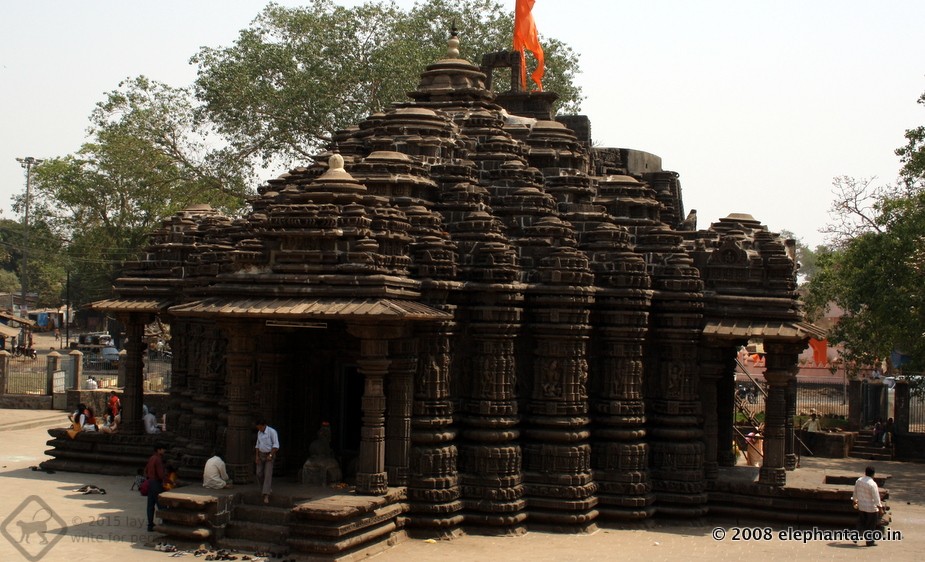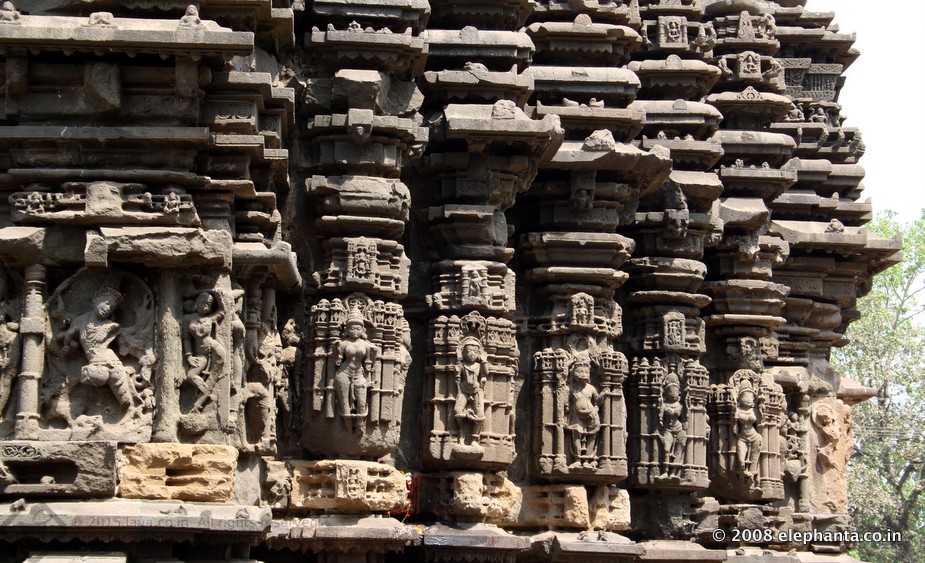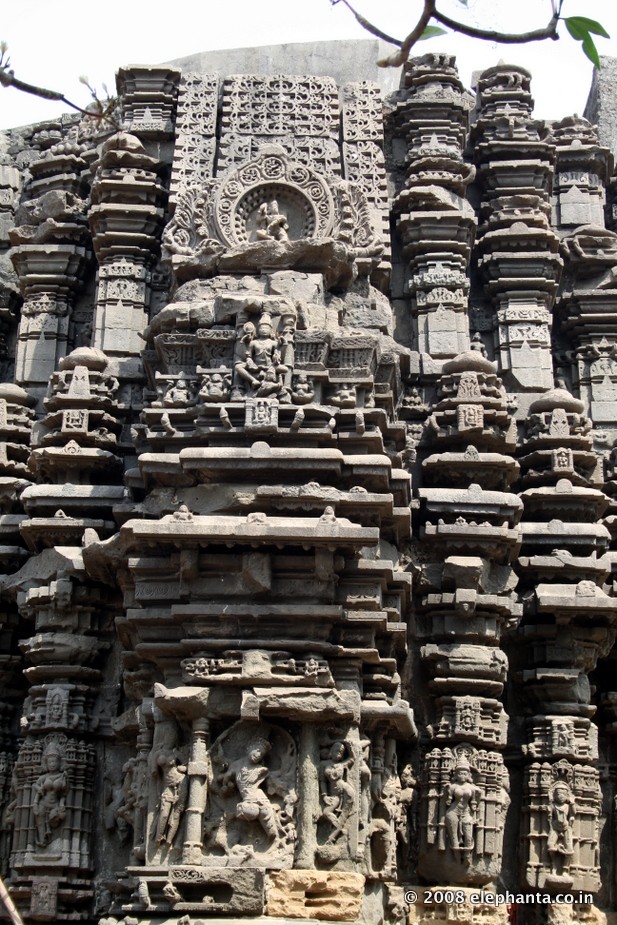Ambarnath

Ambernath
Ambernath
T
he Shiva temple at Ambarnath is one of its kind in this region.This temple is a fine example of the Vesara style that was predominant in the central parts of India. Vesara style is essentially a tasteful blend of two schools of architecture, the Dravidian style and the Nagara style, in simple words, a mix of the north Indian and south Indian styles of temple making.
There were many regional versions of Vesara styles. The one in Ambernath is in the Hemadpanti style. Hemadpanti was a legendary prime minister during the regime of Devagiri kings. He was a great patron of temple architecture and the style evolved under his patronage is named after him.
The features are bold. For example the heavily decorated outside wall and the stepped pyramid that forms the tower. The whole temple is executed in coarse brownish stone that is typical of this region. The plan of the temple is corrugated or fluted along its edges.
The idea is to have a larger wall surface to accommodate a plethora of sculptures and other decorations that is the these of this style. Had it been a straight outer wall only less that half of the sculptures could be accommodated on along the outer surface of the wall.
The sculptures of Hindu mythology, predominantly Shaiva theme , forms a chain around the temple at the eye level. There are fluted mouldings above and below the sculptures.
A large number of the sculptures has lost its details to the weathering. Unlike the soapstone used by the Hoysalas or the hard marble , the type of rock used in Ambernath temple is flaky. The weathering took its toll. The details got blended thanks to the flaking over the centuries. The portions relatively isolated from the natural elements were better preserved. Still as a whole the sculptures are intact.
The tower is in the classic Nagara style. The tower over the vestibule and the central hall is intact, but the pinnacle over the sanctorum is partially collapsed.
One can find the image of dancing Shiva on the tower. The motif on a block standing skyward is beautifully carved.
There are three porches that give access to the central hall of the temple through a vestibule. The priests sit in this portion of the temple. This portion is intricately carved. The roof is supported by an array of pillars , which itself is a piece of art. Never forget to look up at the ceiling with all the details carved in stone. A Nandi ( Bull) image is located at the center of the main porch, which is in the west.
To reach the inner sanctum, one has to climb down from the main hall. The linga is located in this underground sanctorum which is open to the sky. Devotees offer prayer sitting close to the linga, which is installed at the center of this open sanctorum.
The temple is set on the slop of an otherwise barren hillock. A small stream - a tributary of the Valdhan - flows along the edge of the temple compound. The water is much spoiled though.
Shivratri is a major festival day for the temple. Devotees throng in thousands on that day. It falls in February or March every year.
The commissioning of the temple is attributed to the Silhara king Chittaraja. Silhara clan ( 800 - 1240AD) , once the vassals of the Rashtrakutas ruled the northern Konkan including the present day Thane and Mumbai. According to the details inscribed on the temple, the Ambarnath temple was constructed in 1060AD.
It is often said that Chalukyas of Badami (500-753AD) were the first to create school of style. The style further advanced under the Rashtrakutas of Manyakheta (750-983AD), who built the temples of Ellora. Unlike the Ambarnath temple , the Ellora is executed in rock cut style. The most spectacular of this style at its zenith was executed by the Hoysalas (1000-1330 AD) , with their jewel like temples at Belur .
See also How to reach Ambernath.

Ambernath
Ambernath

